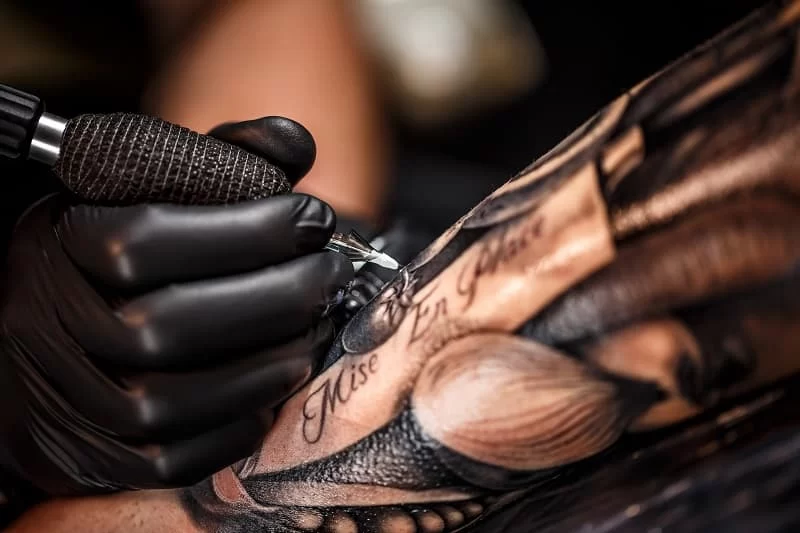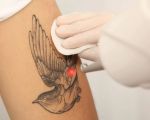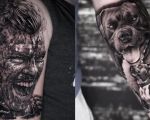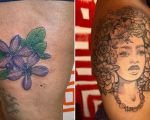
- Understanding-the-Tattoo-Healing-Process
- Essential-Steps-to-Ensure-Proper-Tattoo-Healing
- Common-Mistakes-to-Avoid-During-Tattoo-Recovery
- Real-Life-Experience-a-Tattoo-Healing-Story
- Why-Quality-Tattoo-Care-Products-Matter
Understanding the Tattoo Healing Process
Getting a tattoo is an exciting and meaningful experience, but the journey doesn’t end once the ink is applied. Understanding how your tattoo heals is fundamental to ensuring it looks vibrant and healthy long-term. The healing process typically unfolds over several stages, starting with the immediate wound healing followed by skin regeneration and settling of the ink.
In the first few days, the tattooed skin will be sensitive, red, and slightly swollen as your body treats the tattoo like any other open wound. This phase involves scabbing and peeling, which, although uncomfortable, is crucial for protecting the new ink beneath. During the next couple of weeks, the skin continues to rebuild itself, and the tattoo settles into its final appearance.
Patience and care during this time directly influence how well the tattoo heals, how vivid the colors stay, and the risk of scarring or infection. Every person’s healing process can vary depending on skin type, placement of the tattoo, and aftercare routines.
Why Proper Healing Is Critical
Improper healing can cause issues like fading, discoloration, or even permanent damage to the tattoo. For instance, scratching or picking at scabs can lead to uneven pigment retention and infections. To avoid these risks, knowing how to ensure your tattoo heals correctly is a vital part of the tattoo journey.
Essential Steps to Ensure Proper Tattoo Healing
Following a consistent and gentle aftercare routine is the cornerstone of tattoo healing. Below is an in-depth look at crucial actions you can take to support your skin during the recovery phase.
1. Initial Care Immediately After Getting Inked
Right after your tattoo session, the artist will cover the tattoo with a sterile bandage or wrap. This protective layer shields the fresh tattoo from bacteria and friction. It’s important to leave this covering on for the recommended time—usually 2 to 6 hours—before gently washing the tattoo with lukewarm water and mild, fragrance-free soap.
Pat the area dry with a clean towel or paper towel instead of rubbing it. This step removes blood, plasma, and excess ink without causing irritation.
2. Moisturizing to Support Skin Regeneration
Once the tattoo is dry, apply a thin layer of a high-quality tattoo aftercare ointment or lotion. Hydrating the skin prevents excessive dryness and itching, both of which can hinder healing. Choosing the right product is crucial; look for formulations free of alcohol, fragrance, and harsh chemicals.
At Inked Up Dolls, you can find a curated selection of trusted tattoo care products specifically designed to nourish your healing skin and protect the vibrancy of your tattoo.
3. Avoiding Sun Exposure and Water Immersion
Direct sunlight can fade a new tattoo and damage healing skin, so avoid sunbathing or tanning beds until the tattoo is fully healed. If you must go outdoors, wear loose clothing to cover the tattoo or apply a broad-spectrum sunscreen once the skin is no longer open.
Similarly, avoid soaking the tattoo in pools, hot tubs, or baths to prevent infections and prolonged moisture exposure, which can soften scabs and delay healing.
4. Refraining from Scratching and Picking
Itching is common as the tattoo scabs and peels, but scratching or picking can cause scarring or ink loss. Instead, gently tap the area or apply more moisturizer to soothe the itch.
Common Mistakes to Avoid During Tattoo Recovery
Even with the best intentions, certain habits can sabotage your tattoo’s healing process. Being aware of these pitfalls helps you maintain healthy skin and an impressive final tattoo.
1. Neglecting Aftercare Instructions
Every tattoo artist provides personalized aftercare guidance. Ignoring these instructions, such as removing the bandage too early or using unsuitable products, increases the risk of infection and poor healing.
2. Over-Moisturizing or Under-Moisturizing
While moisturizing is essential, overdoing it can suffocate the skin and create an environment for bacteria. On the other hand, neglecting hydration causes dryness and cracking. Balance is key, applying care products as recommended.
3. Returning to Strenuous Activities Too Soon
Excessive sweating and friction from exercise can irritate a fresh tattoo. Allow your body time to heal before resuming intense physical activities.
Real-Life Experience: A Tattoo Healing Story
Jessica, a tattoo enthusiast from Austin, shared her personal experience of learning how to ensure her tattoo heals correctly after a less-than-ideal first attempt. Her initial tattoo faded and scabbed unevenly due to scratching and skipping moisturization. Determined to improve, she followed a disciplined routine for her second tattoo: carefully washing, moisturizing with recommended products, and avoiding sun exposure.
The result was striking—a vibrant, well-defined tattoo that remained flawless over time. Jessica’s story highlights how attentive care dramatically changes the outcome, reinforcing the importance of understanding and respecting the healing process.
Why Quality Tattoo Care Products Matter
Not all tattoo aftercare products are created equal. Using poor-quality creams or ointments can cause allergic reactions, clog pores, or slow healing. High-quality products with natural, skin-friendly ingredients promote faster recovery and keep your tattoo looking fresh.
For those wondering where to find the best tattoo aftercare solutions, Inked Up Dolls offers a thoughtfully selected range of tattoo care products. Whether you need gentle cleansers, nourishing lotions, or protective balms, their inventory supports every stage of tattoo healing and maintenance.
By investing time and care into your tattoo’s healing journey, you ensure that your artwork remains a source of pride and beauty for years to come.








